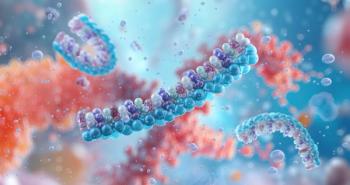
Fatigue is Nearly Universal with MPNs, But Patients Report Lack of Guidance on How to Manage It
Interviews with people with myeloproliferative neoplasms show almost all of them often feel fatigued — and that they must manage the problem on their own.
A new report examining the issue of fatigue among people with myeloproliferative neoplasms (MPNs) suggests patients often feel as though their healthcare providers fail to fully understand or address the prominent symptom.
The article,
People with MPNs can experience a range of symptoms, including bone pain, abdominal discomfort, and itching, noted corresponding author
Pearson and colleagues said the impact of that fatigue on patients’ daily lives can vary from patient to patient. They said the majority of available research on the topic is quantitative, rather than qualitative, in nature.
“However, academic literature lacks deeper insight into precisely how fatigue affects the everyday experiences of people with MPN, or how they live with fatigue,” she said.
The new study was structured to include semi-structured interviews, which were thematically analyzed by researchers, and four focus groups, in which patients were able to share their feelings in groups of two to five people with MPNs.
Four themes emerged: patients said they experienced distress based on the life-changing nature of the diagnosis; patients described the depth of their fatigue and contrasted it with normal ‘tiredness;’ patients discussed the emotional burdens caused when fatigue changed their daily routines; and lastly, patients described feeling like they had to manage their fatigue with limited guidance from healthcare providers.
With regard to the specific features of their fatigue, patients reported getting to points where they felt they could not continue and had to sleep.
“Some participants felt fatigue building throughout the day, but for others fatigue was omnipresent,” they wrote. “Many participants described a sudden awareness of fatigue, with an urgent need to sit, lie down or sleep.”
Yet, many patients said they were still exhausted even after they slept.
Some reported “brain fog,” a feeling of difficulty focusing on tasks or finding themselves making careless mistakes.
Many of the patients interviewed said they changed their diets and activity priorities in hopes of addressing their fatigue. They said it was difficult to manage their fatigue in part because it was hard to find people who understood what they were going through.
“Unsatisfying responses of friends, family and healthcare professionals often led participants to online support,” Pearson and colleagues wrote. “Many participants reported distress when health professionals handled their fatigue with disdain or disinterest.”
Patients also said they felt stress because they had low stamina but did not appear “sick” on the outside, leading to strains with regard to their self-identity, relationships, and social lives.
“Lack of knowledge and professional guidance escalated their distress,” the authors added.
The investigators said it is important for healthcare professionals to realize that MPN is an all-encompassing disease that affects both the physical and emotional wellbeing of patients.
“It is imperative that clinicians acknowledge and address this most prevalent and debilitating MPN symptom, to achieve the best quality of life for their patients,” they said.
The authors said there are currently no MPN-specific guidelines to address fatigue, but they said the general guidelines for cancer fatigue are likely to make a meaningful difference for patients. Those guidelines include reducing patients’ symptom burdens, exercise, and cognitive behavioral therapy.
“Future studies investigating fatigue interventions in MPN populations and male experiences of MPN fatigue are needed to facilitate holistic treatment of people diagnosed with MPNs,” they concluded.
Newsletter
Get the latest industry news, event updates, and more from Managed healthcare Executive.






















































